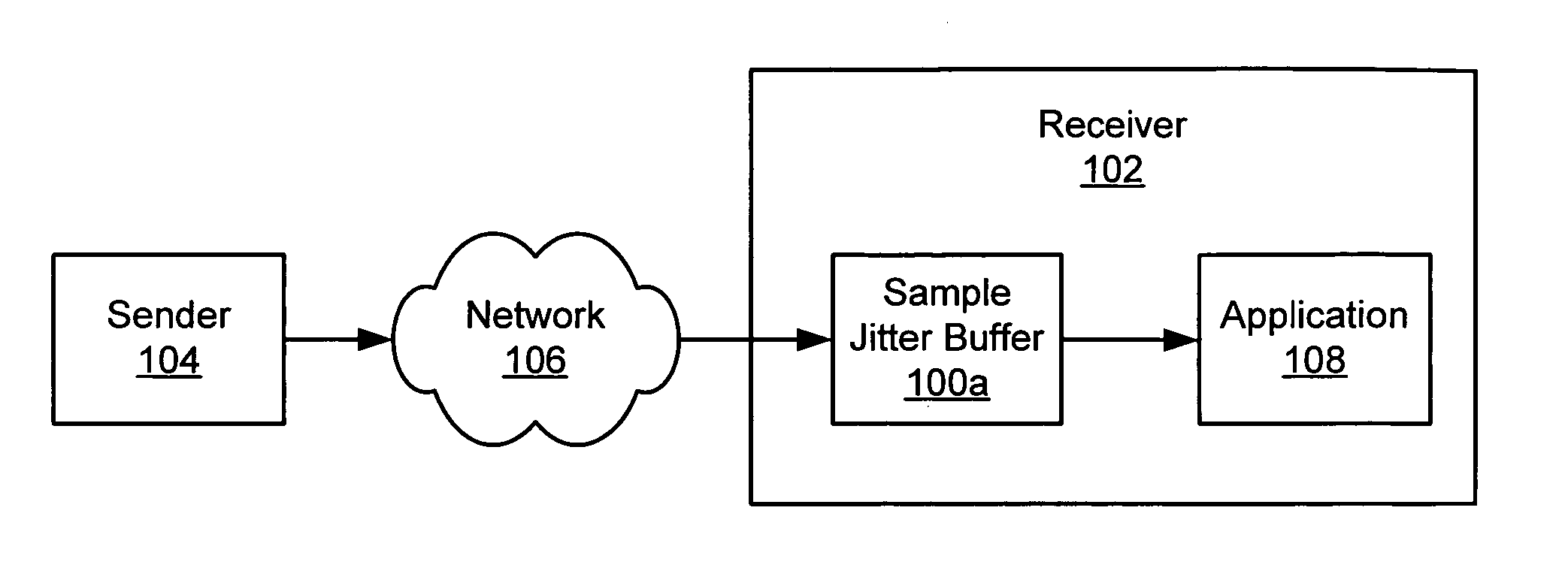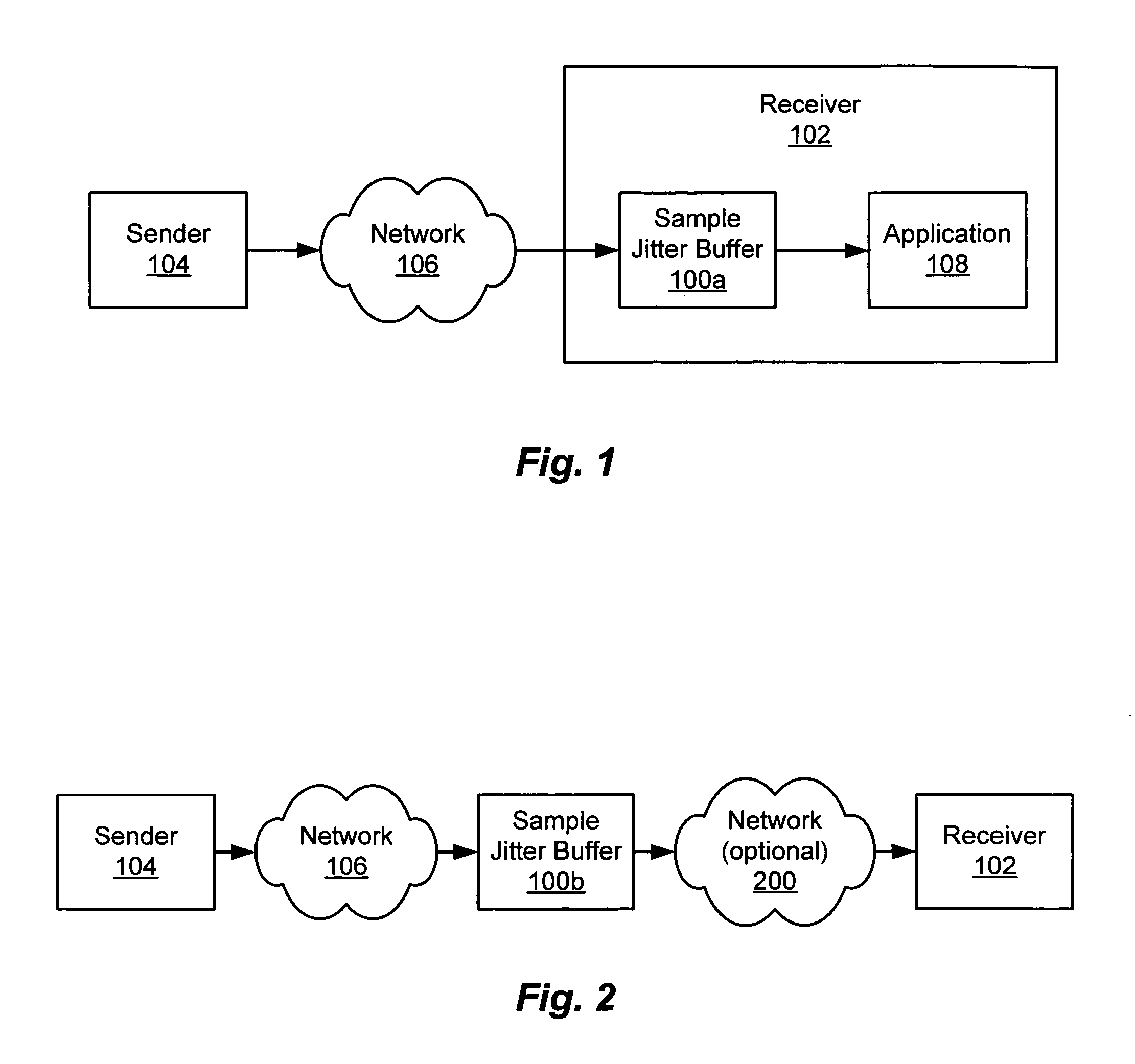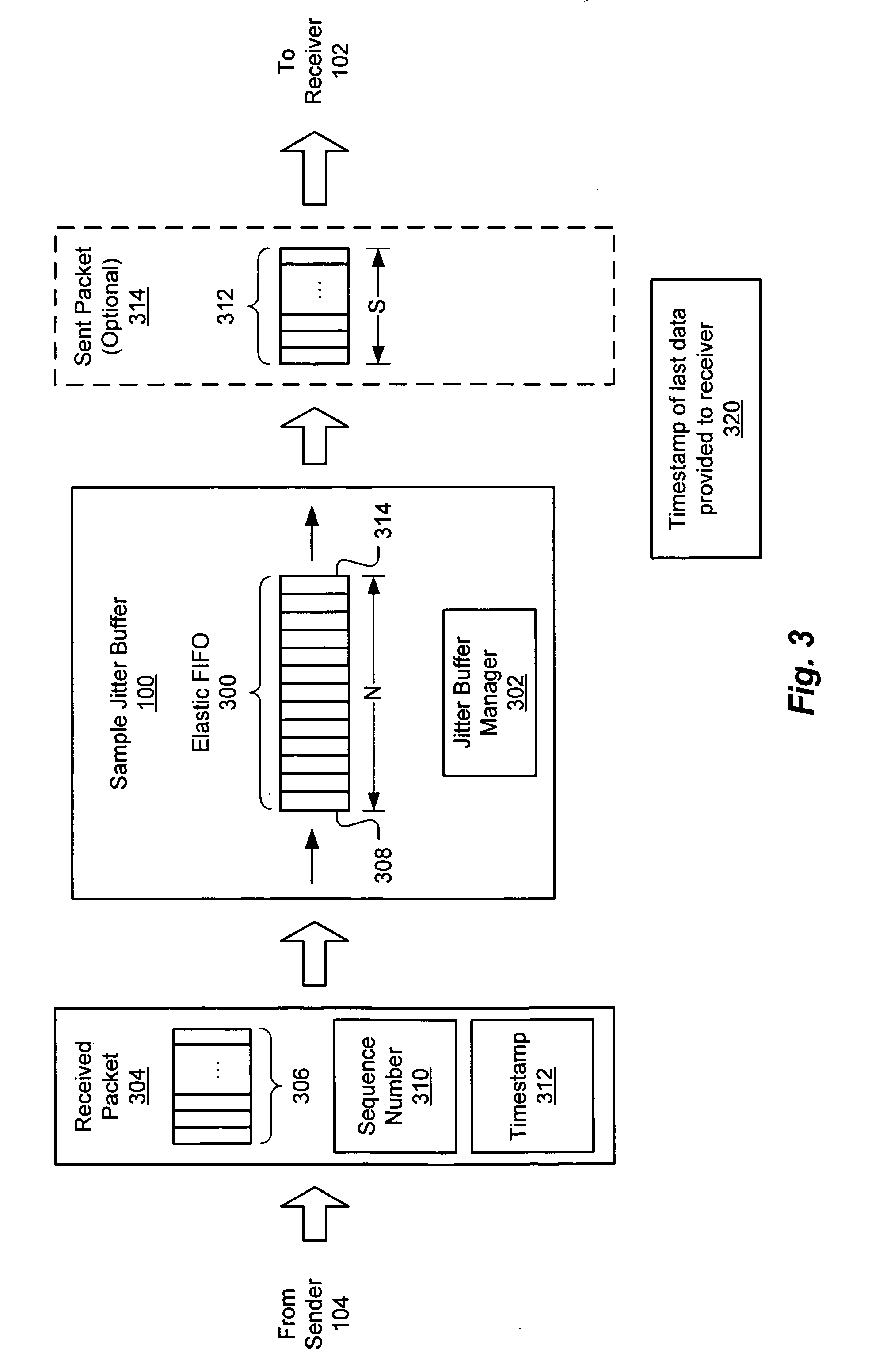Jitter buffer management
a technology of jitter buffers and buffers, applied in data switching networks, multiplex communication, selective content distribution, etc., can solve the problems of low data in the jitter buffer, achieve the effect of avoiding large discontinuities in signals, and avoiding significant discontinuities in signals
- Summary
- Abstract
- Description
- Claims
- Application Information
AI Technical Summary
Benefits of technology
Problems solved by technology
Method used
Image
Examples
Embodiment Construction
[0025] The contents of U.S. Provisional Patent Application No. 60 / 554,024, filed Mar. 16, 2004, titled “A Method for Jitter Buffer Management,” are hereby incorporated by reference herein.
[0026] Methods and apparatus are described herein for managing jitter buffers in ways that reduce the likelihood of underflow or overflow of the buffers and that mitigate the impact on signals produced by receivers in the event of fluctuations in inter-arrival times of packets at the jitter buffers. The presently disclosed system monitors and controls data in sample jitter buffers with more resolution than in conventional jitter buffers. For example, the disclosed sample jitter buffers can buffer, count, provide, discard and otherwise manage individual bytes, samples or other sample data units, rather than entire packets. Jitter buffers according to the present invention are referred to herein as “sample jitter buffers.”
[0027]FIG. 1 illustrates an exemplary system in which one embodiment of a samp...
PUM
 Login to View More
Login to View More Abstract
Description
Claims
Application Information
 Login to View More
Login to View More - R&D
- Intellectual Property
- Life Sciences
- Materials
- Tech Scout
- Unparalleled Data Quality
- Higher Quality Content
- 60% Fewer Hallucinations
Browse by: Latest US Patents, China's latest patents, Technical Efficacy Thesaurus, Application Domain, Technology Topic, Popular Technical Reports.
© 2025 PatSnap. All rights reserved.Legal|Privacy policy|Modern Slavery Act Transparency Statement|Sitemap|About US| Contact US: help@patsnap.com



